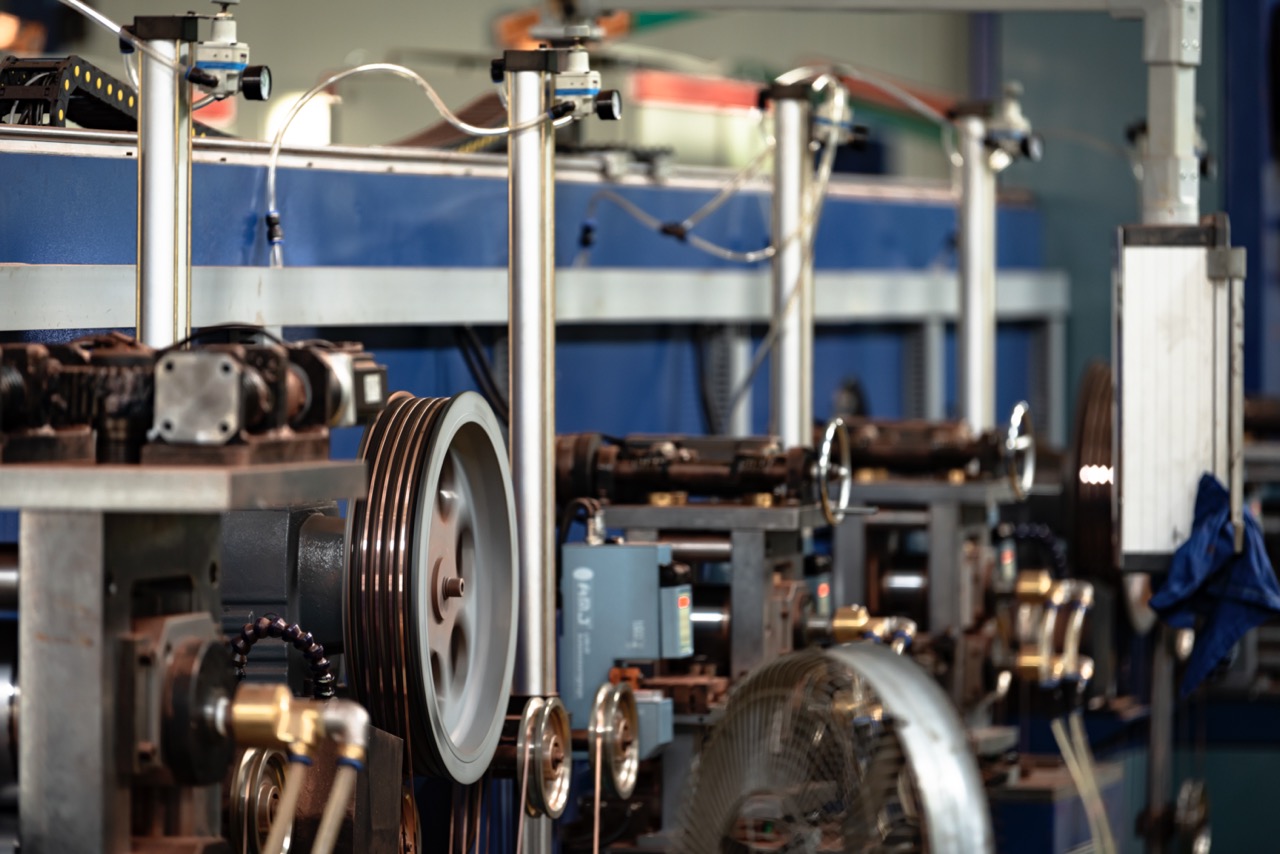The production of small-sized copper-clad aluminum flat wire is a highly sophisticated process, involving multiple links such as copper-aluminum composite, precision rolling, surface treatment, annealing, tinning, etc. Each step has strict requirements on size, bonding strength and electrical properties. The following is a systematic process introduction:
Production process of small size copper clad aluminum strip flat wire
1. Raw material preparation
- Aluminum core wire selection: High-purity aluminum (such as 1350 or 3003) requires a smooth surface, no oxide scale, and no impurities.
- Copper layer raw material: High-purity oxygen-free copper or phosphorus deoxidized copper, requiring good ductility, rollability and no cracks.
2. Copper-aluminum composite (cladding)
Small-size products generally use "cladding composite" or "metallurgical bonding" technology to ensure that the copper layer fits tightly against the aluminum core.
- Coating method:
- The copper strip is wrapped into a tube, which fits tightly to the aluminum core;
- The initial forming is completed through continuous compounding equipment;
- Heat treatment fusion:
- Some manufacturers use hot rolling or diffusion welding technology to achieve metallurgical bonding and improve peel strength;
- Detection of copper layer bonding strength:
- The peel strength test is ≥12N/cm, ensuring that there will be no peeling or bulging during subsequent processing.
3. Multi-pass precision cold rolling
The core of the process is to gradually roll the coated copper-clad aluminum round wire into flat wire of target specifications.
- Multi-roll precision rolling mill:
- Rolled into small-sized strips with thickness of 0.05mm to 0.30mm and width of 1mm to 10mm;
- Control the width-to-thickness ratio and the integrity of edges and corners to ensure smoothness and brightness;
- More rolling passes, usually needs 5 to 10 rolling passes;
- Key control parameters:
- Thickness tolerance: ≤±0.005mm;
- Width tolerance: ≤±0.03mm;
- Curvature and edge straightness: must be achievedPhotovoltaic welding ribbonIndustry standard.
4. Intermediate annealing
To improve ductility, eliminate internal stress, and prevent cracking or peeling.
- Control annealing temperature and time to avoid copper and aluminum delamination;
- Ensure that the material has good weldability and softness;
- Improve the stability of the next tinning process.
5. Surface treatment and cleaning
- Purpose: Remove rolling oil and oxides and improve surface activity;
- Use alkaline or neutral detergent, ultrasonic + hot water rinse;
- The surface must meet the standards of being free of particles, scratches, oil and oxide scale.
6. Tin plating (if necessary)
Photovoltaic welding ribbons are mostly tin-plated to enhance welding performance.
- Plating type: pure tin or tin containing silver;
- The tin plating thickness is generally 3~10μm and can be customized;
- Tin plating uniformity control ≤±1μm;
- Subsequent drying treatment ensures a bright surface without tin nodules or tin slag.
7. Inspection and cutting
- Conductivity test: Ensure that the resistivity meets the welding strip standards;
- Bond strength test: The copper layer cannot be peeled off or delaminated;
- Dimensional inspection: width, thickness, edges and corners, surface quality;
- Slit into rolls of specifications required by customers (e.g. 500m, 1000m rolls).
8. Finished product packaging and shipment
- Use moisture-proof film + vacuum seal packaging;
- Add cushioning material to prevent the tape from deforming during transportation;
- Affixed with technical labels such as size, batch, conductivity, etc.
- High temperature, low temperature and salt spray test reports are included with delivery.
Advantages of Ruichuang's small-size copper-clad aluminum flat wire
- ?? High dimensional control accuracy:RaytronAdopting precision rolling mill imported from Germany, it can produce 2
10mm, thickness 0.050.3mm high-precision flat wire; - ? Strong bonding without delamination:Metallurgical bonding + multiple intermediate annealing to solve the problem of traditional copper-clad aluminum peeling;
- ?? Excellent electrical conductivity: The copper layer thickness is uniform, the welding efficiency is high, and it meets the photovoltaic welding ribbon replacement standards;
- ?? Large-volume and stable supply capability: Automated continuous production line to ensure stable delivery time.
